Algebra- Arithmetic mean or arithmetic average
Formula
ma = (x1+x2+ ... + xn) / n
If a, b and c are real numbers, their arithmetic mean is ma = (a + b + c) / 3 - Calculate percentage %
How mouch is percentage X % from number Y?
How to calculate the percentage of a number?
You can also use the simple rule of three - Fractions in decimals - how do I do them?
Any ordinary fraction with a denominator power of 10 can be written as a decimal fraction.
How can I convert a fraction to a decimal number?
Learn how to write ordinary fractions in decimal form.
How do I convert from decimal to binary? - The rule of three
The simple rule of three is the method for determining proportionality.
The simple rule of three is a mathematical method that allows one of the terms of an equation of proportionality to be determined based on the others.
The rule is to calculate the fourth proportional of the proportions:
a / b = c / x
The Rule of Three is a Mathematical Rule that allows you to solve problems based on proportions. By having three numbers: a, b, c, such that, ( a / b = c / x), you can calculate the unknown number
Flat geometry Area of the ellipse Area of the ellipse
By definition, the area of the ellipse is equal to π × a × b, where a, b are the semi-axes, and π (pi) is a mathematical constant equal to 3.14159.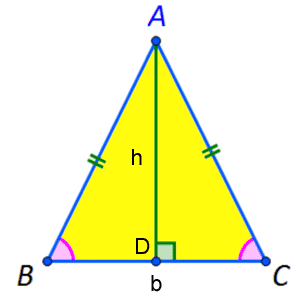 Area of the isosceles triangle Area of the isosceles triangle
Aria = (b * h) / 2
The area is equal to the base (b) multiplied by the height (h) divided by 2
The height is found by Pythagoras' theorem from the right triangle formed when the height falls perpendicular to the base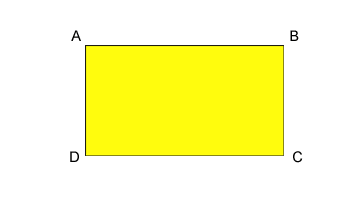 Area of the rectangle Area of the rectangle
The area is calculated by multiplying the long side by the short side
A = AB x BC
The area can be defined as the amount of space covered by a flat surface of a particular shape.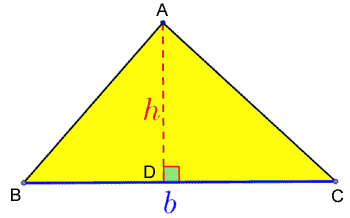 Area of triangle Area of triangle
It is simply half of b times h
Area = 1/2 (b*h)
Area = ½ A B sin C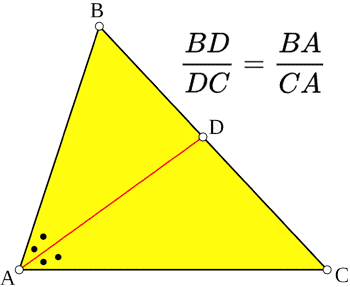 Bisector theorem Bisector theorem
In a triangle ABC, the bisector of the angle A determines on the opposite side (BC) segments proportional to the sides of the angle
BD/DC=BA/CA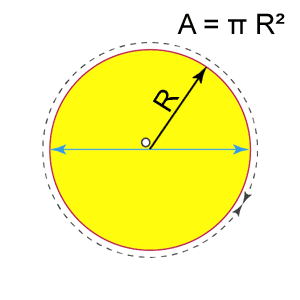 Circle area Circle area
If the circle has radius R then the area is π R²
A = πR²
The area of the circle is equal to pi (π) multiplied by the radius squared.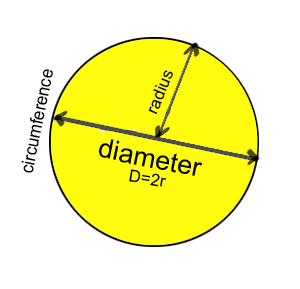 Diameter and circumference of the circle Diameter and circumference of the circle
Formula
Diameter d = 2 × r
The circumference C = π × d = 2 × π × r
Circle disk area A = π × d² / 4 = π × r²
π = 3.14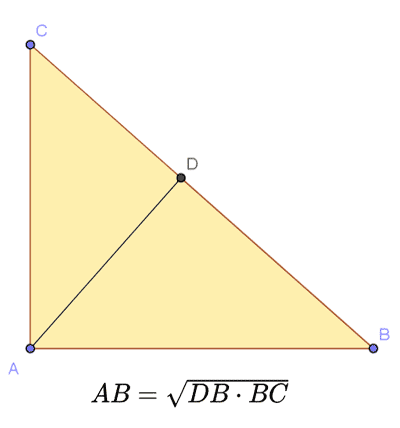 Leg theorem Leg theorem
In every right triangle, a leg (a or b) is the geometric mean between the hypotenuse (c) and the projection of that leg on it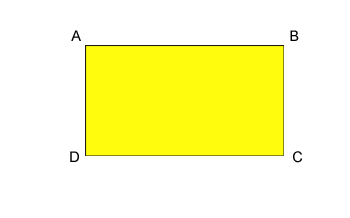 Perimeter of the rectangle Perimeter of the rectangle
The perimeter of the rectangle is defined as the sum of the 4 sides of the rectangle
P=AB+BC+CD+DA Pythagoras Theorem Pythagoras Theorem
The Pythagorean equation relates the sides of a right triangle in a simple way, so that if the lengths of any two sides are known the length of the third side can be found. Another corollary of the theorem is that in any right triangle, the hypotenuse is greater than any one of the other sides, but less than their sum.
a2 + b2 = c2
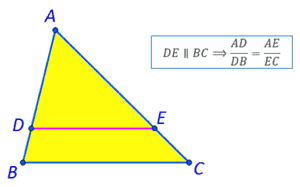 Thales' theorem Thales' theorem
A parallel to one of the sides of a triangle determines the other two sides, or their extensions, proportional segments.
Space geometry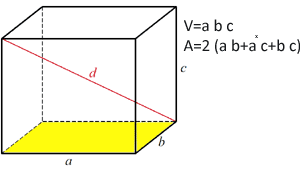 area of the rectangular parallelepiped area of the rectangular parallelepiped
The total area of the rectangular parallelepiped is 2 * (area of side ab + area of side ac + area of side bc)
Air side ab = a x b
Air side ac = a x c
Area side bc = b x c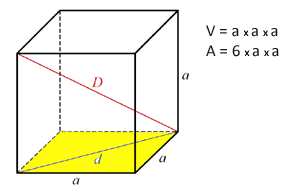 Cube area Cube area
How is the area of the cube calculated?
The area is calculated: the area of a square (square side - a 2 ) and multiply by 6.
A = 6 * a 2 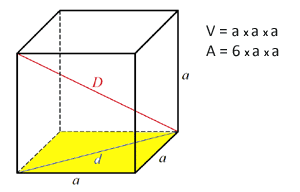 Volume of the cube Volume of the cube
How is the volume of the cube calculated?
What is the formula and the figure.
The volume is equal to the area of the base multiplied by the height (square side multiplied by a 2 * a)
V = a * a * a = a 3 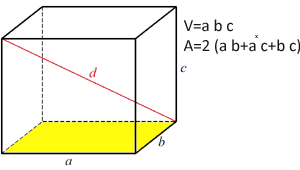 Volume of the rectangular parallelepiped Volume of the rectangular parallelepiped
The volume of the rectangular parallelepiped is calculated by multiplying the base area by the height of the parallelepiped.
Volume formula:
V = a * b * c
Trigonometry Kosinus - Kosinus (x) - Kosinusfunktion Kosinus - Kosinus (x) - Kosinusfunktion
The cosine function is defined in a right triangle as the ratio of the adjacent leg to the hypotenuse. The graph of the function is a cosine. The function is defined in the range from -∞ to ∞ and has values between -1 and 1. sine sin (x) - sine function sine sin (x) - sine function
Calculate the result sine sin (x) - sine function
sine law, sine formula, or sine rule
|